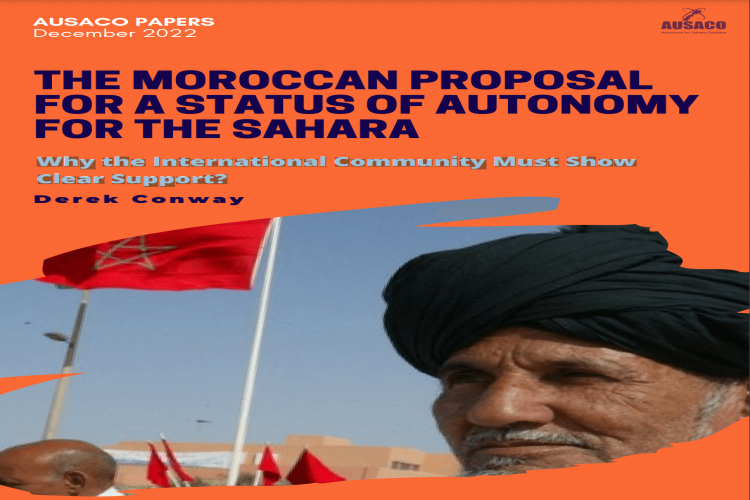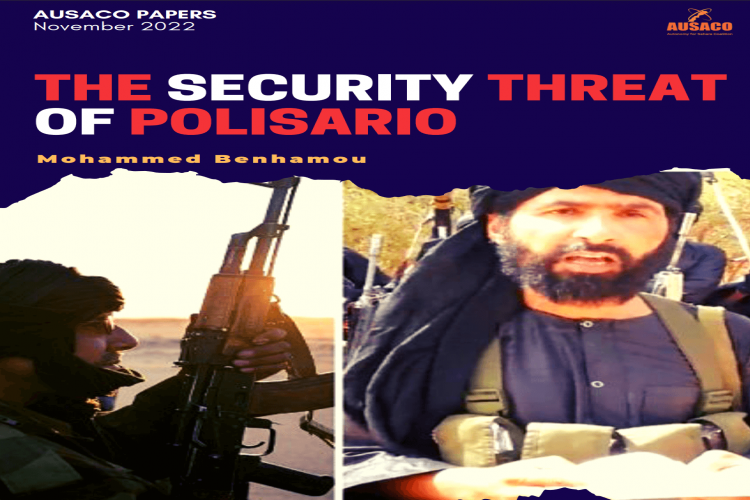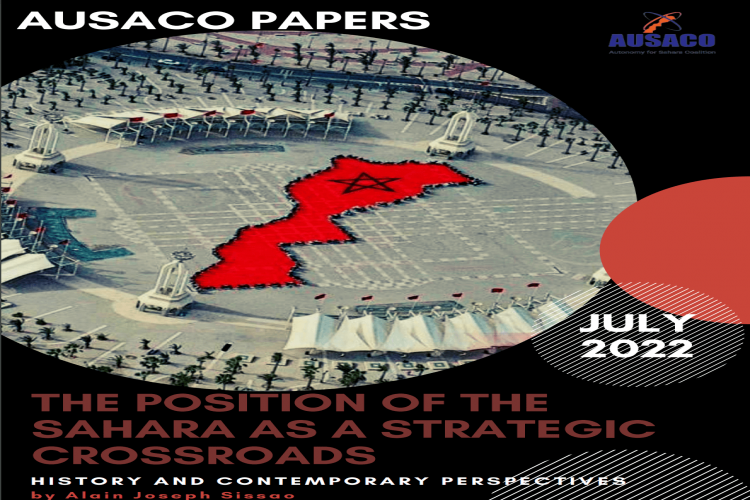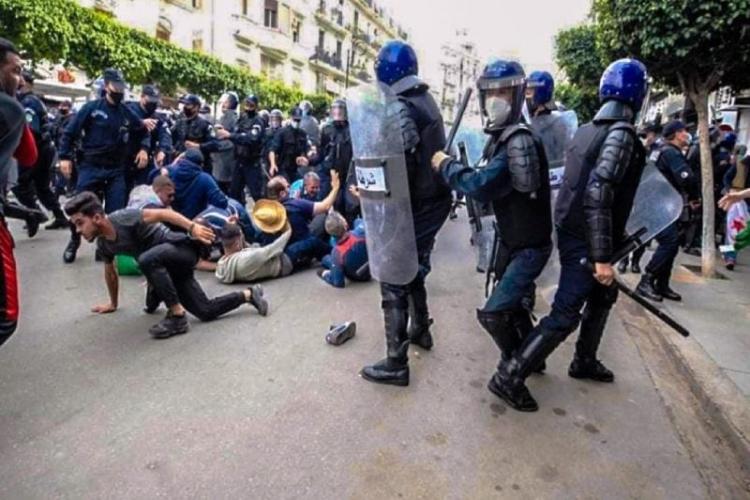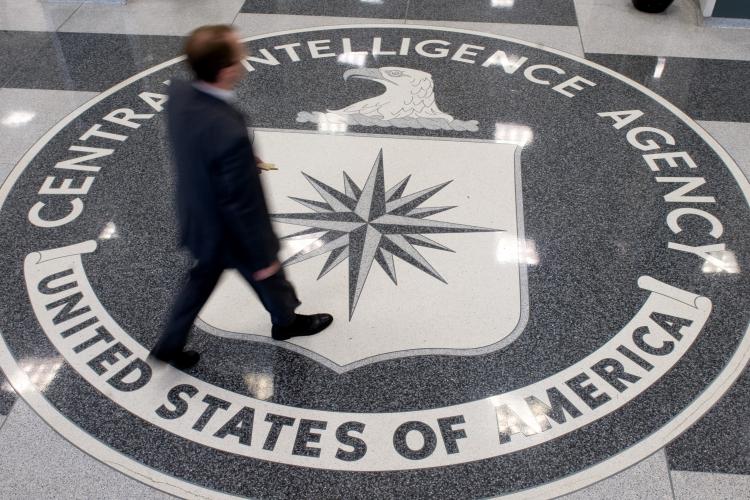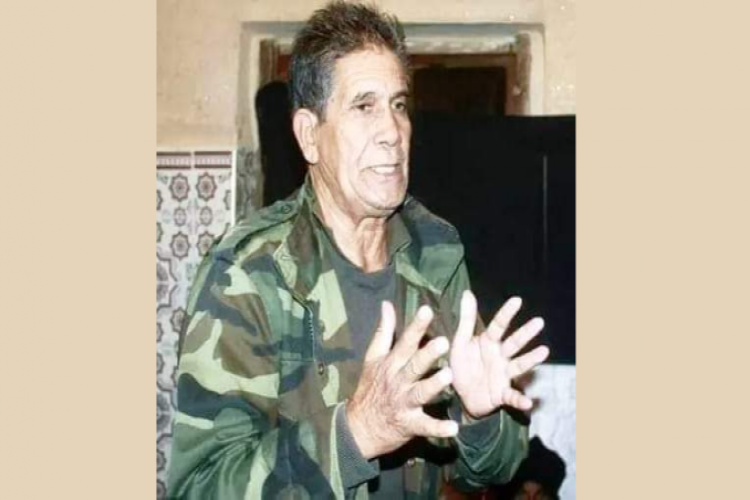| Attachment | Size |
|---|---|
| MOROCCAN SAHARA: From the Green March to the Opening of the Consulates General in Laayoune and Dakhla (8.77 MB) | 8.77 MB |
Based on extensive studies, a reading of international sources and references and historical facts, one can only conclude to the right of Morocco to its Saharan territories, the legitimacy of its full sovereignty, and the existence of legal and sovereign ties between the Sultans of Morocco and the Sahara.
The ruling dynasties in Morocco have been confronted to continuous attempts to separate the Sahara region from the north of the Kingdom. Morocco has experienced a unique colonial situation, with the concentration of French colonialism in the center of Morocco and Spanish colonization in the north and south, and the presence of various international powers in Tangier. However, after the end of French protection, the Kingdom of Morocco gradually regained the territory of Tarfaya in 1958, Sidi Ifni in 1969 and the southern provinces in 1975.
Morocco has thus been able to liberate and reunify its territory thanks to the ferocity of the Moroccan resistance for several decades, as well as to its decision to enter negotiations, through which Morocco reaffirmed to the world that the Moroccan Sahara in particular has been and will continue to form its natural extension, a link between it and its African depth.
In the midst of Morocco's efforts to free the region from colonialism, the “Polisario” did not exist yet, and therefore it was not possible to talk about the "Sahrawi people", but rather Moroccan Sahrawis who paid political, religious and social allegiance to the Moroccan authorities over decades[1].
This led to the fact that it never established any political organization or real entity that is independent of Morocco, until the Spanish colonization of 1884 dominated Sakia El Hamra region, Oued Ed- Dahab, and tearing up the territorial unity of Moroccan. Nevertheless, as we will see later through the international agreements concluded by Morocco, the international powers have continued to recognize the sovereignty of Morocco over its entire southern territories because they have consistently resorted to the Moroccan Sultan to protect their ships and the activities of their nationals in the Sahara, and those agreements have included the Sahara. The 1906 Algeciras Agreements, which placed Morocco under a "protectorate", provided for the demarcation of Morocco’s borders up to Oued Ed-Dahab[2].
I- Introduction:
It is true that the issue of the Sahara has been in existence for a long time, and today it ranks among the longest-standing territorial disputes of modern history, but we must constantly summon, as we address this issue, that this conflict is of political and geo-political nature, linked to the consequences of the Cold War and the ideological hostility to Morocco’s international sovereign choices and to Algeria’s and the Gaddafi regime’s role.
This is because the Moroccan Sahara issue today is a case that falls within the framework of the Kingdom's completion of its territorial integrity, and not within the framework of the decolonization, as Morocco's opponents to its territorial integrity argue.
Thus, the process of decolonization of the Sahara ended with the Madrid Accords, which were registered with the United Nations on 10 December 1975. In accordance with this agreement, Spain has put an end to the responsibilities and powers it has enjoyed in the territory as an Administering Power.
Today's calls for the "decolonization of the Moroccan Sahara" are nothing but the expression of opposition to Morocco's historical rights and vital interests, and reflect systematic hostility and misalignment between two countries linked by history and a common destiny.
The Sahara issue has to do, above all, with the political and diplomatic behavior of Algeria, the eastern neighbor of Morocco, which is using all its capabilities in international forums, to support the "Polisario" separatists and to promote their obsolete rhetoric, and has been for more than forty years sheltering separatists and holding Sahrawis as hostages in the Tindouf camps, on its soil. While the history of French colonization of Algeria attests to Morocco’s concern for Algeria’s independence and territorial integrity, is this how Algeria returns the favor?
03
Section I: Internal evidence of Morocco’s sovereignty over its Sahara.
Section II: External evidence of Morocco's sovereignty over its Sahara.
Section III: Legal and sovereign ties that confirm Morocco’s rights over the
Sahara.
Section IV: The international sovereign approach supporting the Moroccanness
of the Sahara: Opening of Consulates General.
To simplify the inquiry into this conflict, the focus will be on four keys to understanding the Sahara issue:
I- Internal evidence of Morocco’s sovereignty over the Sahara There are coherent arguments and clear evidence that prove Morocco's right over the Sahara. After all, the dynasties that set out to rule Morocco from the 11th to the present century necessarily have Saharan origins and extensions. All of them were born from the Sahara, and they have continued to exercise their complete sovereignty over it. Thus, the ruling dynasties were never just a hegemonic power in the region or authorities exercising mere administrative powers over a “dependency”.
Morocco’s centuries-old sovereignty over the Sahara is confirmed by the reality of history and its overwhelming arguments, the logic of the law, and political practice, all of which have established the foundations of allegiance and the Commandery of the Faithful. The dynamic of the history of the Sahara attests to its inclusion in the whole of the Moroccan entity, which has been fully and spontaneously integrated, as throughout that history the Moroccan Sahara has been the line of defense of the Cherifian Kingdom, its so-called strategic depth.
It is worth mentioning that the Sahara has been a starting point for the dynasties of Morocco, the monarchies, be it the Marinids, the Saadians or the Alawites. The population of the Sahara, with its various Arab, Amazigh, and Hassani tribes, has maintained extensive links with northern Morocco with respect commercial, religious and social matters that ignore ethnic or cultural borders.
A number of edicts and documents issued by the Moroccan authorities are evidence of the existence of an organic association between them and the Saharan tribes in the Sahara region of southern Morocco, and document the geographical and institutional extension of the Moroccan State in the Sahara. All tribes in the region have maintained their allegiance to the Moroccan Sultan in order to ensure the safety of the trade routes linking northern and southern Morocco. More than that, they have remained ready to defend northern Morocco against external ambitions and hostile military campaigns.
04
Upon reading the Royal Decrees (Cherifian Dahirs), it is clear that caïds, walis, governors, civil servants and judges are appointed to many Sahara tribes, and that the Sultans of Morocco are keen to organize their public life, including taxes, trade movement, secure trade routes, and the activity of “zawayah”. These are the areas of the organic and historical interrelationship between the Moroccan State and its strategic depth in the Sahara[3].
This is what the Moroccan monarchs' correspondence with the sheikhs of the Sahara tribes, the tours of the Moroccan Sultans in the southern regions, and the allegiance of the Sahara tribes to Moroccan kings. What is now called "Western Sahara" is a Spanish heresy to undermine the political and social unity of Morocco’s southern region.
The first dynasty to rule Morocco established a number of zawayah, notably the AlSheikh Maa al-Enein al-Adrisi zawyah in Smara, the Sheikh Sayed Ahmed al-Arousi and the Sheikh Sidi Ahmed al-Rakibi zawayah, all of which spread in the Sahara and continue to be loyal to the central authority in Fez.
Under the guidance of the Moroccan Sultan, these zawayah have strongly confronted all attempts of foreign domination and control over the Sahara, thanks to the spirit of jihad that was instilled by the Moroccan authorities in the souls of the tribal sheikhs and “zawaiah”, which remained keen on their ideological and cultural unity. This clearly shows the capacity of Morocco's rulers to provoke jihad as a duty to preserve the unity and sovereignty of the nation. We therefore conclude by emphasizing the historical and political unity that has linked Morocco to its southern territories.
05
The Merinid Sultan appointed "Yacoub Bin Abdul Haq" one of his bases as a worker behind a armor, and the Mariniya state had settled there between a mukhak and a Malawiya.
In the time of the Saadian dynasty, great interest in the Moroccan desert regions has grown.
Sultan Moulay Al-Hassan directed Sidi Ahmad Bin Mohamed Bal-Aamesh to administer justice in the Tjkant tribe relying the jurisprudence of the tribe and the rulings of the Maliki madheb.
Upon receiving allegiance, Moulay Hassan has made a number of trips to the areas south of the Souss and the Draa. In 1882, during his trips to the Sahara, he ordered the building a port on the Atlantic Ocean so that the Sahara regions could be reached via the sea for military and economic purposes, and on that occasion, he appointed caïds and walis in the Sahara.
Cherifian Dahirs were issued to appoint scholars and jurists to spread science and knowledge, such as the appointment by Sultan Moulay Al-Hassan of the Sheikh Maa El Aynine.[4]
On the basis of these considerations, the Sahara has been a strategic line of defense of the Moroccan State since immemorial times, and we can even say that the Sahara has woven Morocco's history and its African depth, establishing trade routes that Morocco's monarchs have ensured their security, trade safety and spiritual security as well.
In this regard, we mention the appointment and dismissal of the khalifahs, caïds and judges in the Sahara regions by the Moroccan Sultans based in the successive capitals of Morocco, including Fez and Marrakech, the correspondence of Moroccan monarchs with the sheikhs of the Saharan tribes, as well as the tours of the Moroccan sultans of the tribes of the South. Morocco's kings also received allegiance from the Sahara tribes.
We expose to the reader the following historical events that demonstrate the extent of Morocco’s sovereignty in the Sahara:
At the level of appointments and correspondence:
06
In 1678, Moulay Ismail Alawi made a large tour of the Sahara, where he met all the tribal chiefs. He also appointed caids on the occasion, including his son, Abdul Malik Khalifa, who was appointed to the area of Draa.
Moulay Hassan I made his first trip to the Sahara in 1880, and then a second one in 1884, which lasted for a long period, during which he inspected the living conditions of the population, making contacts with the tribal chiefs, who informed him of their anger at the Spaniards, who were trying to secure control of the region.
Sidi Mohamed Bin Abdullah, in 1755, paid a visit to the Sahara, and appointed Al Mahjoub Bin Qaid as the caïd over the region.
Moulay Abdul Aziz's mission to Smara in 1905;
Receiving Saharan missions to Sultan in late 1905 under Moulay Abdul Aziz.
Sultan Moulay Abdul Aziz’s construction of the city of Smara as a headquarters for Jihad, a resistance center to fight the French and Spanish colonizer, through which instructions from the Sultan can be easily implemented.
Letter of protest by Sultan Moulay Abdul Aziz addressed in 1900 to the caïd "Abdullah Bin said", a representative of the Makhzen Tangier, against the entry of the French forces and their incursion into the Sahara;
The letter of Sultan Sidi Mohammad Bin Moulay Abdul Rahman Bin Hisham to Sheikh Habib Birouk, by which he orders him to transfer a Spanish prisoner who was arrested by the Saharans to Taroudant and then to Essaouira, and urges him to respect the ships that landed on the Saharan coasts and to transfer their shipments to the Makhzen authorities in the capital;
Hassan I's message to Habib Ibn Sheikh Mubarak Al-Wadnuni Al-Jilmi, on the
subject of arresting two Spanish renegades leaving the coasts of Essaouira;
The message of Hassan I to Ibrahim Bin Mubarak Al-Zarki, in which he assures
him of his exemption from all taxes, except the Zakat;.
Moulay Abdul Aziz's message to the caid Ibrahim Al-Shtuki Al-Tekni, instructing
him to monitor the coastline from Tarfaya to Cape Boujdour;
Moulay Abdul Aziz's message to caids Mohammad Al-Amin and Bin Al-Amin Bin
Abdullah, mandating them to manage the ports of the South;
The message of Moulay Abdul Hafid Bin Al-Hassan to the caids Mohammad Bin
Bilal and Ibrahim Bin Mubarak from the Tkna tribes, in which he orders them to
expel a Christian from Tarfaya.
Tours of the Moroccan Sultans in the Sahara:
Exchange of missions:
Exchange of correspondance :
07
Moulay Abdul Aziz dispatched a mission to Smara in 1905, composed of Sharif
Moulay Idris Bin Abdul Rahman Ibn Sulaiman, the Sultan's representatives in the
Sahara, and the Minister Mohamed Al-Hassan Benyaich.
Missions dispatched to the Sahara:
In the same vein, the Sultans of Morocco supported the efforts of the Sahrawi tribes
to combat various invaders. A particular mention should be made of the support to
the struggle of Sheikh Ma al-'Aynayn against the French-Spanish occupation, the
control by the central authority of the area south of Oued Draa, and the pacification
of the situation in the Moroccan Sahara.
These appointments, correspondence, tours, missions highlight not only the extent
of the loyalty and allegiance between the Sahara tribes and the Moroccan sultans,
but also a very advanced style in the decentralized governance of the Sahara, and
the contribution of those caids, walis and judges to the establishment of Morocco's
sovereignty over the Sahara. These acts of sovereignty were carried out in the spirit
of the Moroccan state, based on the concept of the unity of religion and written
allegiance, which is a political and social covenant between the Sultan and his
subjects, through which the parties aspire to establish loyalty in exchange for
defense over the security and safety of the Sahara territory.
We conclude through these historical arguments to the capacity of the dynasties
that have ruled Morocco from Almoravides to the Alawites to establish sovereignty
over the Sahara, embodied by political, religious and social practices in their relations
with the tribes of the Sahara. These practices are based on the principle of allegiance
and duty to safeguard the interests of the Sultan’s subjects.
II- External evidence of Morocco's sovereignty over the Sahara
Since the advent of the Idrissid dynasty and the implementation of its administrative
division of Morocco, the Sakia El Hamra and the Oued Ed-Dahab have been subject
to the same laws as the rest of the country. The Moroccan Sultans have signed
numerous international treaties and agreements with various foreign countries, that
all shared provisions recognizing the sovereignty of the Sultan over the whole
territory of the Cherifian Kingdom, including the Sahara. The international
community explicitly recognized Morocco's legal and sovereign ties with the
Moroccan Sahara. In this regard, due to the abundance of these treaties and the
diversity of their subjects, we shall limit ourselves to providing some examples.
08
First, the Treaty between Morocco and Spain, concluded on 1 March 1767, states
that "Moroccan sovereignty extends beyond the Nunn Valley", meaning that it
extends to the south of the region adjacent to the Sakia El Hamra, as this article
states: "His Majesty the King warns the population of the Canary Islands against any
attempt to fish on the shores of the Nunn Valley and beyond, and he bears no
responsibility for what will happen to them by the Arabs of the region to whom the
decisions are difficult to apply. They do not have a single living place, they move as
much as they like, and they build their tents wherever they find it suitable." This
clearly shows the existence of a Moroccan authority over the Nun Valley and beyond
in the Sahara, as well as these tribes’ allegiance to the Sultan [6].
The contents of this agreement were reinforced on the eve of March 1799 by
another treaty, article 22 of which stipulates that "if a Spanish ship sinks beyond
Sous and the Valley of the Nun, then, in the spirit of the amicability of the King of the
Spaniards to the Sultan, all necessary searches shall be made to rescue the
endangered sailors and return them to their country”. It is worth mentioning that
Spain was attempting to establish Spanish commercial facilities in the southern
Moroccan coasts in order to exercise full control over these coasts, but Sultan
refused the demands of Spanish King Charles IV.
Second, the Treaty between Morocco and the United States of America in 1786,
contained provisions by which Sultan Sidi Mohamed bin Abdullah pledged to provide
the necessary assistance and protection to ships that navigate in the Atlantic.In its
tenth article, it states that "if an American ship crashes on the banks of the Nun
Valley or on the banks adjacent to it, its passengers remain safe until it is possible to
return to their country, God willing."
09
The international treaties of which Morocco
was the subject establish the existence of an
actual Moroccan authority over the Saharan
territories, especially two treaties of the 15th
century, the Alcáçovas Treaty and the Cintra
Treaty signed between Spain and Portugal.
The first treaty defined the agreement of the
two parties on the borders of the “Kingdom of
Marrakesh” in the south of Cape Boujdour,
and the second treaty provides for the
borders of the Kingdom of Fas, Morocco. The
two treaties not only confirmed the
sovereignty of the Sultan but also recognized
that the Moroccan authority was extending
beyond Cape Boujdour[5].
Thirdly, the treaties that regulate the Moroccan-British relations, which have
included provisions focusing on the Saharan region. One of them was the 1801
Peace and Reconciliation Treaty between Moulay Sulaiman and King George III of
England, which provides for the rescue of English ships: “In the event of a ship
sinking in Oued Noun or in the vicinity, the Sultan of Marrakech shall deploy all
efforts to rescue its crew. The English Consul or his deputy is allowed to participate
in the search and retrieval of the wreck in the region, under the supervision of the
representatives of the Sultan of Marrakech.”
The Anglo-Moroccan Treaty of 1895 states in its first article that "no power can
make claims on territory between Oued Draa up until Cape Boujdour and Tarfaya. It
is because these lands belong to Morocco".
We conclude that, according to the agreements, the Moroccan Sultan has been
committed to using his authority to rescue and rescue sunken ships and their
passengers, thus having effective powers in the Saharan coasts localities, and that
he held the power to license consuls to participate in the search for shipwrecks.
10
The Moroccan Sultan is committed to using his authority to rescue and rescue
sunken ships and their passengers.
Second, relief, rescue and assistance operations are carried out under the
supervision of the Moroccan governors in the region.
Third, the Consuls of foreign countries that undertake rescue and relief
operations are authorized to do so only upon permission by the Moroccan
Sultan. The same applies to the foreign States with respect to fishing or
exercising authority over ports.
Having considered these treaties, especially their provisions relating to the Sahara,
we can make the following conclusions:
In fact, in their international undertakings relating to the Sahara, the Moroccan
sultans have been keen to on ensuring that their sovereignty for the region is
effectively recognized.
The French-Spanish competition for Moroccan soil, which led to negotiations
between the two countries in 1902, considered Sakia El Hamra and the Oued EdDahab as exclusively Moroccan territories, to pave the way for Spain's 1904
domination of Sidi Ifni and Tarfaya. However, the resistance of tribal chiefs, as was
the case of Sheikh Ma El Ainin was conducted as that of a liberation movement
under the authority of the Sultan of Morocco.
III- Legal ties and sovereign ties that confirm Morocco’s rights
over the Sahara.
The Sahara region remained under Spanish colonization for almost nine decades.
The Spanish ambitions have focused on the region because of its strategic
importance. This colonial reality was created by the conspiracies of colonial powers
against Morocco, and by secret agreements aimed at destroying its territorial
integrity, which neither Sultan Abdul Aziz nor his successor, King Abdul Hafiz, were
able to confront.
In 1479, the Treaty of Alcáçovas between Spain and Portugal, endorsed the
occupation of the Canary Islands and the south of Morocco. The Treaty of Alcáçovas
provided for the recognition of the Portugal’s influence in the Kingdom, while
Portugal, for its part, recognized Spain’s sovereignty over the Canary Islands. Thus,
starting in 1865, Spain went to expand its influence on the southern Moroccan coast
to expand its influence, exploit its maritime resources and control the commercial
routes of the region [7].
Until 1884, thanks to the ferocity of Moroccan resistance on the one hand and the
economic crisis it was experiencing at that time, Spain could not dominate the whole
of Morocco’s Saharan territories, and only controlled the commercial center of the
city of Dakhla.
However, in 1884 Spain declared its protectorate of the Moroccan Sahara’s coastline
beaches from Cape Boujdour to Ouad Dahab, considering the whole region a colony.
11
The Moroccan Sahara’s tribes have responded with a brutal resistance to the
Spanish colonizer, in this regard, through the armed attacks of Sheikh Maa alAynin's followers on some Spanish facilities, and the organization by caid Saleh Ibn
Birouk of offensive operations against two Spanish commercial ships. The Ouled
Dalim and Ouled Bousboua resisted Spanish interests in the region.
The Aït Baamrane revolution was also crucial to the departure of Spaniards from the
Sidi Ifni area, and has forced the Spanish military to recognize the end of its
occupation of Tarfaya in 1958 and to withdraw from Sidi Ifni in 1969.
Since 1958, Morocco has been demanding Spain to leave the rest of the Moroccan
territory occupied by its armies. It is useful to recall in this context the visit of the
late King Mohammed V to the region of Mahamid Al-Ghazlan in Oued Draa, where
the tribes of the region renewed their allegiance to him. In view of Morocco's
insistence on ending colonization in its southern regions, making use of the choice of
resistance and negotiations at the same time, and Morocco's diplomatic efforts to
liberate the Sahara from the Spanish colonization, the Kingdom secured the
adoption of resolution 2072, which referenced resolution 1514 adopted on
December 14, 1960. This resolution urged the Government of Spain, as the
Administering Power of the Sahara, to immediately take all necessary measures for
the liberation of the Sahara region, the provinces of Ifni and Oued Ed-Dahab, and to
enter into negotiations on the problems of sovereignty raised by these two
territories.
Consequently, the international community has recognized the colonial situation of
the Moroccan Sahara by Spain, and that it must be immediately liberated, pursuing
to the UN resolution on the granting of independence to colonial countries and
peoples. In the face of pressure from international public opinion and the resistance
of the Moroccan Sahara’s tribes, Spain in 1966 proposed to organize a referendum in
the Sahara, with a view to sow the seeds of instability in the Sahara. Spain refrained
from direct recognition of the Moroccanness of the Sahara, and resolved to keep the
region separated from the rest of the Moroccan territory. In doing so, it ignored the
historical facts of the resistance of the Moroccan Sahara’s tribes for decades, and
continued to oppose Morocco's sovereign rights. It was supported by Algeria, which
in turn encouraged a secessionist movement that has proclaimed itself as "Polisario
front".
12
The liberation of the Spanish colonial authority by the Saharan tribes;
The United Nations General Assembly and the Security Council have never asked
Morocco to report on the situation in the Territory;
No legal opinion was issued by the United Nations describing the Sahara as a
"colony" or Morocco as an "occupier";
Following the signing of the Madrid Agreement by Morocco and Spain, the
transfer of authority between the Spanish and Moroccan governments took
place, in the sense that Morocco’s sovereignty over the territory has become
effective and legitimate;
The agreement of the Saharans and all tribes to decolonize the Sahara region,
reintegrate into Morocco and Mauritania, and settle the situation on the basis of
historical facts and the rights of the region's inhabitants.
After the success of the Green March, Morocco signed the Madrid Agreement[8]
with Spain which recognizes Morocco's rights to its Sahara. In turn, Algeria created
the "Polisario" and hosted it on the territory of Tindouf, with a view to further its
interests over the issue of borders with Morocco. All Saharans know that during
November and December 1975, “Polisario” asked many Sahrawis to come to a
gathering in Guelta Zemmur, and when they came there, they were directed to
another gathering in Bir Lehlou. Later, they were asked to come to Tindouf in order
to be made hostage. To date, they are still being held there, prevented from leaving,
and monitored day and night, to prevent their return to their homeland, Morocco.
At Morocco's request, the Saharan region was registered on the agenda of the UN
Fourth Committee at Morocco's request in 1963. Morocco demanding the
decolonization of the territories occupied by Spain, 10 years before the “Polisario
front” was created in 1973[9].
The issue of the Sahara was dealt within the Special Committee charged with
examining the situation with regard to the implementation of the 1960 Declaration
on the Granting of Independence to Colonial countries and Peoples, followed by the
Commission's decision on the subject (resolution 2072), which stated: "Urgently calls
upon the Government of Spain, as the administering Power, to take all necessary
measures immediately to liberate the territories of Ifni and the Spanish Sahara from
colonial domination[10].
Since Spain's withdrawal from the Sahara region and its recovery by Morocco in
1975, the Sahara cannot be classified as a Non-Self-Governing Territory, with the
following considerations:
Thus, we note that Spain’s departure and the return of the Sahara to Morocco in
1975 put an end to the decolonization of this region, and Morocco completed its
territorial integrity.
13
Was “Western Sahara” (Rio de Oro and Sakiet El Hamra) at the time of
colonization by Spain a territory belonging to no one (terra nullius)?
What were the legal ties between this territory and the Kingdom of Morocco and
the Mauritanian entity?
After its withdrawal, Spain, in a letter to the United Nations General Assembly dated
26 February 1976, declared that it considered itself "free of any responsibility of an
international nature with regard to the administration of the said Territory”, while
stopping its contribution to the Interim Administration that had been created [11].
Thus, His Majesty King Muhammad VI stressed in a previous speech that "Morocco
in its Sahara was never an occupying power, or an administrative authority. It
exercises its sovereign powers on its territory land” [12], for the concept of
“occupying power” refers to the occupation of the territory of a State already in
existence during an international armed conflict, which does not apply to the
situation of the Moroccan Sahara [13].
Following the approval by the United Nations General Assembly in 1963 of
Morocco's request for the inclusion of the Saharan region in the agenda of the
Committee of 24, the General Assembly in 1974 requested the International Court of
Justice to provide an advisory opinion, in light of resolution 1514 on the "Granting of
Independence to Colonial countries and Peoples", on the situation of the “Spanish”
Sahara. It must be recalled that Spain strongly rejected and opposed the
International Court of Justice's opinion on the legal and sovereign character of the
Saharan region.
After 27 public hearings, the International Court of Justice (ICJ) issued an advisory
opinion dated October 16, 1975, which answered the following questions[14]:
14
The Kingdom of Morocco affirms the existence of sovereign links to the Sahara
stemming from the historical possession of the Territory.
It takes into account the special structure of the Moroccan State in that historic
era.
The first question was answered by the Court, that, in the wake of the Spanish
colonization of the Sahara region, the Sahara was not a terra nullius, nor was it a noman’s land, but inhabited by politically and socially organized tribes under the
authority of the sheikhs. Spain itself, having extended its influence over the region,
has invoked agreements with local sheikhs.
Prior to answering the second question, what legal links had the region, the Kingdom
of Morocco and the Mauritanian group been linked? The Court has defined as "legal
links" all the links that can affect the methodology for eradicating colonialism from
the Sahara. On the specific question of links with the Kingdom of Morocco, the Court
explained that it took into account:
After having examined internal events, including the appointment of governors, tax
collection, armed resistance, the Sultans’ tours of the region and correspondence,
and external events, including the conclusion of international treaties, agreements
and diplomatic correspondence, which Morocco considered to be an affirmation of
international recognition by other Governments of such historic sovereignty, the
court concluded that there are spiritual, religious and political relations between the
tribes of the region and the Moroccan Sultan.
This is a recognition by the International Court of Justice of Morocco's exercise of its
effective sovereignty, which affirms its historical rights over the Territory. The
Court's reasoning was realistic and satisfactory to Morocco, but the conclusion was
not logical, as it contained a contradiction between the recognition of the existence
of legal allegiance ties between the Saharan population and the Moroccan Sultan,
including the existence of land-related rights, and the absence of recognition of
sovereignty ties. At the same time, it denies territorial sovereignty links between the
population of the Sahara and the Kingdom of Morocco. The links of legal allegiance
and territorial rights recognized by the Court were, in fact, a logical consequence of
territorial sovereignty ties. There was also an overlap between the legal link and the
sovereign link, which could never be separated.
In the light of the initial recognition of the International Court of Justice that Morocco
had effectively exercised authority over the Sahara region as evidenced by history,
and Morocco's conviction of its historical rights, the late King Hassan II, organized a
Green March in 1975, a confirmation March that crossed the artificial borders
between Morocco and the Sahara left by Spanish occupation. Morocco was able to
return to its territorial unity, especially after November 14, 1975, when the Madrid
Agreement signed a final withdrawal of Spain from the Sahara, thus settling the
colonization of the region.
15
Following this new reality, Algeria and the “Polisario” separatist movement launched
raids on the Saharans, and Algeria has taken a number of the Saharan population
into Tindouf camps. To this day, the international community has been unable to
determine neither their legal status, whether "refugees" or detainees, their number,
nor even the political and judicial authority responsible for the camps. Many
questions contained in the relevant Security Council resolutions have not yet been
addressed, owing to Algeria's media blackout, the denial of access to special
rapporteurs and human rights organizations, as well as the concealment of the
reality of slavery and the state of misery and oppression suffered by the hostages of
the Tindouf camps in Algeria.
IV- International sovereign approach supporting the
Moroccanness of the Sahara: Opening of Consulates General.
The sovereign decision of the twenty-two countries of three continents (Africa, Asia
and America) to open consular representations in Dakhla and Laayoune comes on
top of the internal and external arguments that prove the Moroccanness of the
Sahara.
This sovereign diplomatic decision is in itself a strong basis that translates in
practical terms political positions in support of the Moroccanness of the Sahara, a
legal act confirmed by international law and diplomatic practice, particularly the
1963 Geneva Convention.
The growing international presence in the Moroccan Sahara is a clear recognition of
the sovereignty of Morocco over its Sahara, and an affirmation of Morocco's
legitimate rights, based on history, the law, and reality on the ground. Thus, we are
witnessing a change in the positions of a number of African countries, especially
after Morocco's return to the African Union, accompanied by a developmentoriented economic diplomacy, as well as a policy linking the Autonomy Initiative with
a new development model in line with regional aspirations to security and stability.
16
Moroccan diplomacy, through the approach of consular diplomacy in the Moroccan
Sahara, has thus established a new international approach based on support to the
Autonomy Plan as a realistic and credible solution for a final settlement of the
regional dispute over the Moroccan Sahara, a conviction that development is a prerequisite for stability in the whole region, and the view that stability is a key
challenge for the Maghreb.
This new international approach was crowned by the decision of the United States of
America to recognize the sovereignty of Morocco over its Sahara, forming a turning
point in the history of the region that is crucial to solving the regional dispute over
the Moroccan Sahara.
The American recognition of the Moroccanness of the Sahara constitutes a decisive
stage in dealing with the issue of Moroccan Sahara. This resolution comes on top of
the great efforts made by the United States of America, as a country that has been
the penholder of all Security Council resolutions on the issue of the Moroccan Sahara
to reach a final political solution to this regional conflict.
The opening of more than twenty Consulates General in the city of Dakhla and
Laayoune underscores the international community's responsiveness and conviction
that conflict resolution can be achieved only within the framework of the Autonomy
Initiative under Moroccan sovereignty, with a view to promote regional stability.
The qualitative breakthrough of Moroccan diplomacy is the culmination of His
Majesty King Mohammed VI’s Vision of transition from management to
transformation, and of an action-oriented diplomacy to defend firmly Morocco’s vital
interests and respect for international law.
17
Following these positive changes in the positions of a number of States on the issue
of Moroccan Sahara, we have noted the concern of some opponents of Morocco's
interests and their unjustifiable hostile attitude and incitement against Morocco's
interests. In fact, they have expressed their dismay at the impending final
settlement of this territorial dispute, prompting the Moroccan diplomacy to be more
assertive, to unveil the true intentions behind hostility to Morocco’s interests, and to
address the real causes of the dispute as an alternative to flight forward.
This hostile behavior against Morocco has recently materialized by seeking to
persuade the United States of America to rescind its sovereign decision to recognize
Morocco’s full sovereignty over its Sahara.
On the basis of these internal and external arguments and the sovereign resolutions
of a number of countries supporting the territorial integrity of the Kingdom, the
United Nations, as a logical consequence, has to invoke the international recognition
of Moroccanity of the Sahara when considering this territorial dispute. In view of
Morocco's Autonomy Plan and the discarding of all unrealistic proposals in Security
Council resolutions, the Sahara region is today a rising economic hub, and an
attractive destination for international investment (3 billion dollars is allocated to the
region by the US Agency for International Development (USAID) within the
framework of the Prosper Africa Initiative), and a safe home for self-determination
of the population within the framework of local democracy and good governance.
In order to overcome the stalemate in the Sahara issue, Morocco proposed in 2007,
in response to the demands of the Security Council, the Moroccan Initiative for the
Negotiation of an Autonomy for the Sahara Region, which is a realistic and
internationally credible solution, as an alternative to the referendum, which has
proven to be an unrealistic option.
For decades, the Kingdom of Morocco has bet on a comprehensive development
approach to the Sahara region. Today, the New Development Model for the Southern
Provinces launched by His Majesty King Mohammed VI has strengthened this
approach, while the enemies of Morocco's territorial integrity have been trading in
the tragedies of Sahrawi hostages in the Tindouf camps, in Algeria.
When will Algeria recognize its historical responsibility over the legal status of the
Tindouf camps and the reality of their oppression, deprivation and slavery? When
Algeria realizes that its approach has become obsolete, it must make up for the time
wasted, by working towards economic integration and a shared future between
Morocco and Algeria!
18
[1] Lugan, Bernard (2000). Histoire du Maroc des origines à nos jours. Perrin.
أحمد السالمي االدريسي، األقاليم الصحراوية في االتفاقيات الدولية المغربية ما قبل [2[
الحماية، مجلة أبحاث، العدد 8 السنة 2 ،خريف 1985 ،ص 23
سعيد بوركبة، أضواء عىل عمق الروابط بين قبائل الصحراء المغربية وملوك الدولة [3[
العلوية، مجلة دعوة الحق، العدد 341 ،السنة 40 ،مارس 199 ،ص 97
أحمد السالمي االدريسي، األقاليم الصحراوية في االتفاقيات الدولية المغربية ماقبل [4[
الحماية، مجلة أبحاث، العدد 8 السنة 2 ،خريف 1985 ،ص 23
شبيهنا ماء العينين، الشيخ ماء العينين وجهاده العلمي والوطني، مطبوعات الجمعية [5[
المغربية للتضامن اإلسالمي، الرباط 1995
أحمد السالمي االدريسي، األقاليم الصحراوية في االتفاقيات الدولية المغربية ما قبل [6[
الحماية، مجلة أبحاث، العدد 8 السنة 2 ،خريف 1985 ،ص 25
أحمد السالمي االدريسي، األقاليم الصحراوية في االتفاقيات الدولية المغربية ما قبل [7[
الحماية، مجلة أبحاث، العدد 8 السنة 2 ،خريف 1985 ،ص 25
[8] Declaration of Principles between Spain, Morocco and Mauritania on
Western Sahara, Madrid, November 14, 1975, United Nations, Treaty Series, vol.
988, No. 14450
[9] Report of the Special Committee on the Situation with regard to the
Implementation of the Declaration on the Granting of Independence to Colonial
Countries and Peoples, A/5448/Rev.1, 1963.
[10] Resolution 2072 of the UN General Assembly, adopted on December 16,
1965.
[11] Letter dated 26 February 1976 from the Permanent Representative of
Spain to the United Nations addressed to the Secretary-General (a/31/56-
S/11997
[12] Speech of His Majesty King Mohammed VI on the occasion of the 39th
Anniversary of the Green March, 6 November 2014.
[13] Fourth Geneva Convention, signed on 12 August 1949.
[14] Advisory opinion of the International Court of Justice issued on 16 October
1975.
References:
19
© Autonomy for the Sahara Coalition, 2022
All rights reserved. No part of this publication may be reproduced, stored or transmitted, in any form or
by any means, electronic, mechanical, photocopying, recording or otherwise, without the prior
permission in writing of the publishers.
Published by:
The Autonomy for the Sahara Coalition, AUSACO
Dakhla, Morocco.

